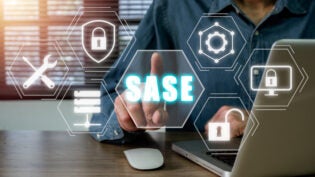This is What It’s Like When AI and Small Business Collide
By: Andrew Heikkila

In current times, it’s no secret that digital devices and online data are constantly at risk. However, The Washington Post recently reported serious numbers from security firm Sitelock, revealing that “the typical small business website is attacked 44 times a day and software ‘bots’ are visiting these sites globally an average of 152 million times a week.”
Numbers like these are growing and likely contribute to statements from Ayman El Tarabishy, executive director of the International Council for Small Business and a professor of management at George Washington University’s School of Business.
In an interview with Chad Brooks on Business.com, Tarabishy confirms that artificial intelligence (AI) for small businesses is a definite must-have, which “not only saves costs but may be more secure (cyber security), provide improved seamless integration and allow for remote access.”
“Cybersecurity is now the No. 1 concern for SMBs,” says Tarabishy. “The saying goes, “an ounce of prevention is worth a pound of cure.” It is imperative that safety and privacy protection must be core component of an SMB technology strategy.”
Using new forms of AI technology, small businesses can protect themselves from cyberthreats and data breaches, and simultaneously increase productivity and efficiency. This is where AI and small businesses collide.
Security
Cybersecurity is obviously no joke, with firms such as Cybersecurity Ventures predicting that cybercrime damages will cost the world $6 trillion annually by 2021.
Unfortunately, this is because of how ineffective old security measures have become. Add into that the fact that approximately 84 percent of cybersecurity incidents are attributable to human error, and you have the perfect recipe for a failing industry.
Fortunately, AI offers an answer to this mounting problem. ESG research has scared up these data points on AI-based cybersecurity adoption, published via CSO Online:
- 29 percent of respondents want to use AI-based cybersecurity technology to accelerate incident detection. In many cases, this means doing a better job of curating, correlating, and enriching high-volume security alerts to piece together a cohesive incident detection story across disparate tools.
- 27 percent want to use AI-based cybersecurity technology to accelerate incident response. This means improving operations, prioritizing the right incidents, and even automating remediation tasks.
- 24 percent want to use AI-based cybersecurity technology to help their organization better identify and communicate risk to the business. In this case, AI is used to sort through mountains of software vulnerabilities, configuration errors, and threat intelligence to isolate high-risk situations that call for immediate attention.
- 22 percent want to use AI-based cybersecurity technology to gain a better understanding of cybersecurity situational awareness. In other words, CISOs want AI in the mix to give them a unified view of security status across the network.
As this technology becomes more attainable, more small businesses are going to wonder how they ever got along without it. For small businesses that have already suffered a debilitating security or data breach, just remember to get back on the horse. There’s an art to recovery after small business failure.
The Power of Big Data
Businesses large and small are wrangling big data, with the understanding that analysis will lead to fantastic results. Any business that isn’t tapped into this market yet risks being left behind.
The reason that AI and big data so commonly go together nowadays is that the mass of data out there is simply too voluminous for human combing and analysis. AI can find patterns that would take IT people years to suss out.
InsideBigData (IBD) lists four ways that AI-powered big data insights can empower your business:
- Increasing customer insight: Whether using public data sets or privately acquired marketing data, you can derive a lot of information about what your customers want, don’t want, expect, and more.
- Creating a more personalized strategy: The way that IBD puts it, “your analytics goals should be based on the movements you want site visitors to take … Obviously, this goes beyond looking for hits on your site. You should consider specific goal-focused questions, before finalizing any key performance indicators.” For example, they ask if you’re trying to get visitors to buy a specific product or download specific content. Use your analytics to achieve these goals.
- Embracing quick thinking: AI-insights can help to analyze and make adjustments to your business and operations nearly immediately. What used to take weeks and months of planning now can literally occur overnight.
- Collaborating and growing as a team: This one isn’t as related to AI, but hosting your data on the cloud can allow team members within and outside of your company alike to work and access information remotely.
Just because it’s called “big” data doesn’t mean it isn’t for small business. Analyze this transformative approach before you’re left behind.
Automation
When we think of automation, a lot of times we think about robots putting together cars on the Ford production line. While this is a form of automation, for small businesses it’s more about software than hardware.
Chatbots are one example of widespread automation that’s gaining a lot of traction. Other examples include AI-based accounting and invoicing operations, as well as automated mailing and marketing tools.
Here’s a list of 10 tools that can help automate a small business, as published by Entrepreneur.com.
Remember: It’s not easy adapting to new technology — but it’s absolutely necessary. The rate at which technology moves makes this a constant challenge but is also the driving reason behind that necessity. If you don’t get with the technological times, you’ll get left behind in a world that moves fast. Don’t be that business, and look into solutions that will lead you through the future.
2969 Views












